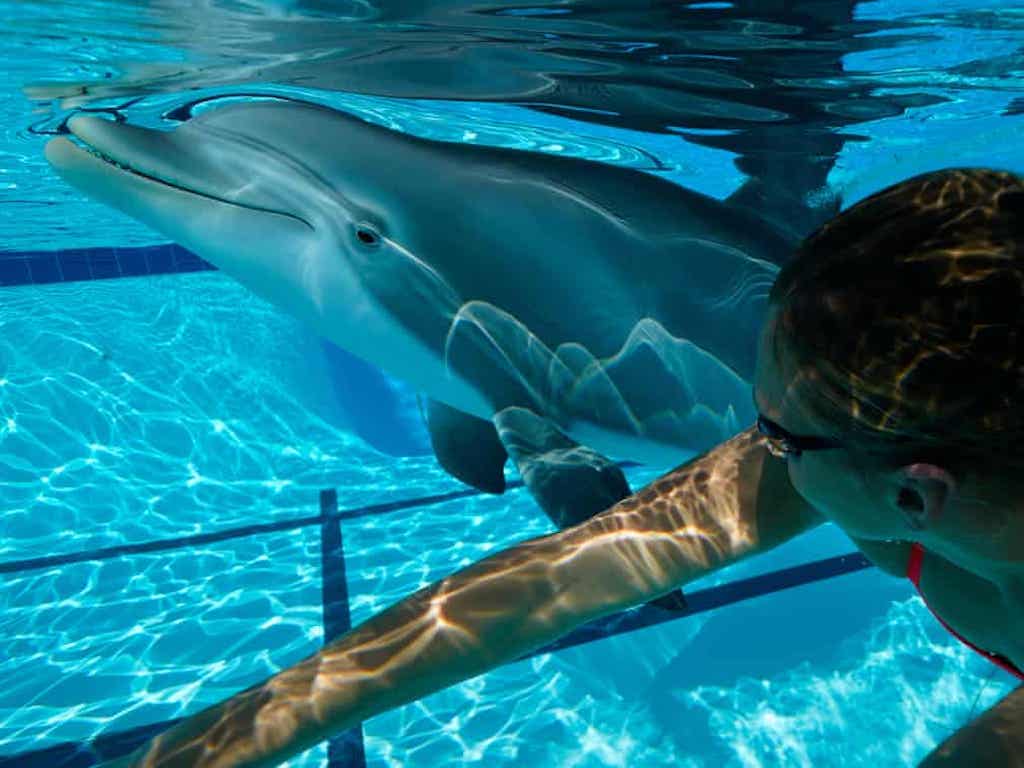3 Mins Read
Could robot dolphins replace real dolphins in aquariums? Some tech innovators say yes. Having created animatronic dolphins that look nearly identical to their living counterparts, these innovators say that this provides a cruelty-free alternative to keeping cetaceans in captivity, especially in China, where the rapidly growing marine park industry is fuelling the inhumane trade to capture dolphins and other marine animals.
Edge Innovation’s life-sized robot dolphins are so real you can barely tell that it isn’t actually a dolphin – they can do everything from responding to questions to swimming around in their display tanks. Designed by Roger Holzberg, a California-based innovator and former creative director at the Walt Disney Company, who worked with Walt Conti, the special effects artist behind the award-winning film Free Willy, these robotic dolphins could remove the need for cruelty behind marine parks.
Read: How the Hong Kong’s Ocean Park fuels the Taiji trade supplying China’s dolphinariums
The public hunger to learn about and experience these animals is still as strong as ever. We believe that it’s time to reimagine this industry and that this approach can be more humane, and more profitable at the same time.
Designer Roger Holzberg
Many marine parks in the West are already facing growing pressure to abandon exhibitions that keep animals in forced captivity, but Holzberg and Conti are eyeing the Chinese market, where the industry continues to boom with as many as 30 aquariums under construction right now.
“The public hunger to learn about and experience these animals is still as strong as ever,” Holzberg told the Guardian. “We believe that it’s time to reimagine this industry and that this approach can be more humane, and more profitable at the same time.”
While each robot dolphin comes with a hefty price tag of around US$27.6 million, the creators say that it will work out to be cheaper in the long-run. Right now, real dolphins cost around a quarter of that sum, but their lifespan can be far shorter, especially when they are held in captivity.
Read: Ocean Park ends exploitative dolphin & sea lion show after activist pressure
We have to persuade them that it is a profitable business, even more profitable than live animals.
Li Wang, Business Developer at Edge Innovation
Kept in tanks and away from their natural habitat, dolphins and other marine mammals do not eat, socialise, reproduce, exercise or behave naturally. Many have to be regularly treated with ulcer and antidepressant medication to relieve them of the suffering of their cruel living conditions and forced behaviours that they have to perform for human entertainment.
Aquariums are also often sourcing their cetaceans from suppliers with horrific inhumane practices, with many of the dolphins sold to marine parks in China traced back to the annual gruesome Taiji dolphin hunts, where pods of dolphins are lured into a small cove, which is then netted off to trap the animals.
“We have to persuade them that it is a profitable business, even more profitable than live animals,” said Li Wang, a business developer for the New Zealand-based firm who are behind the new robot dolphins, in conversation with the paper.
While it could be a while until we see animatronic make it into mainstream marine parks, there’s hope with robotic dolphins that future aquariums could operate in a kinder, more compassionate and cruelty-free way.
Lead image courtesy of Edge Innovation.




